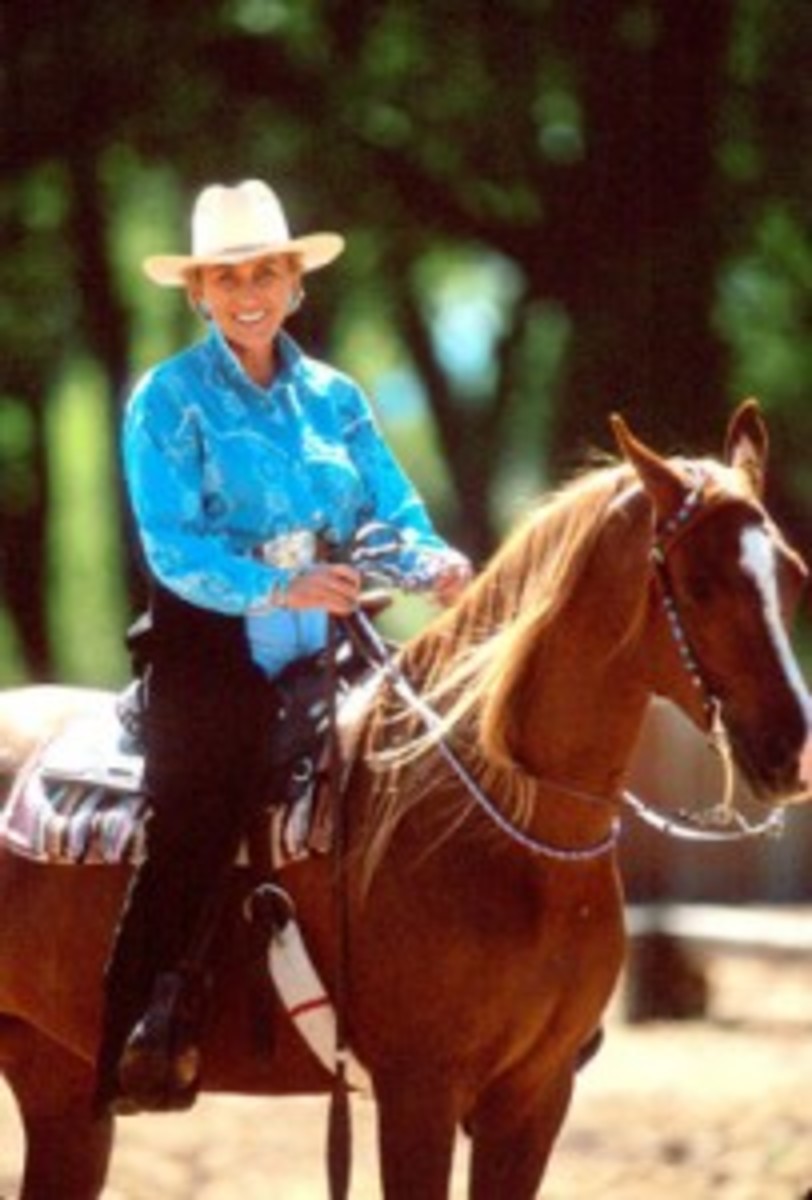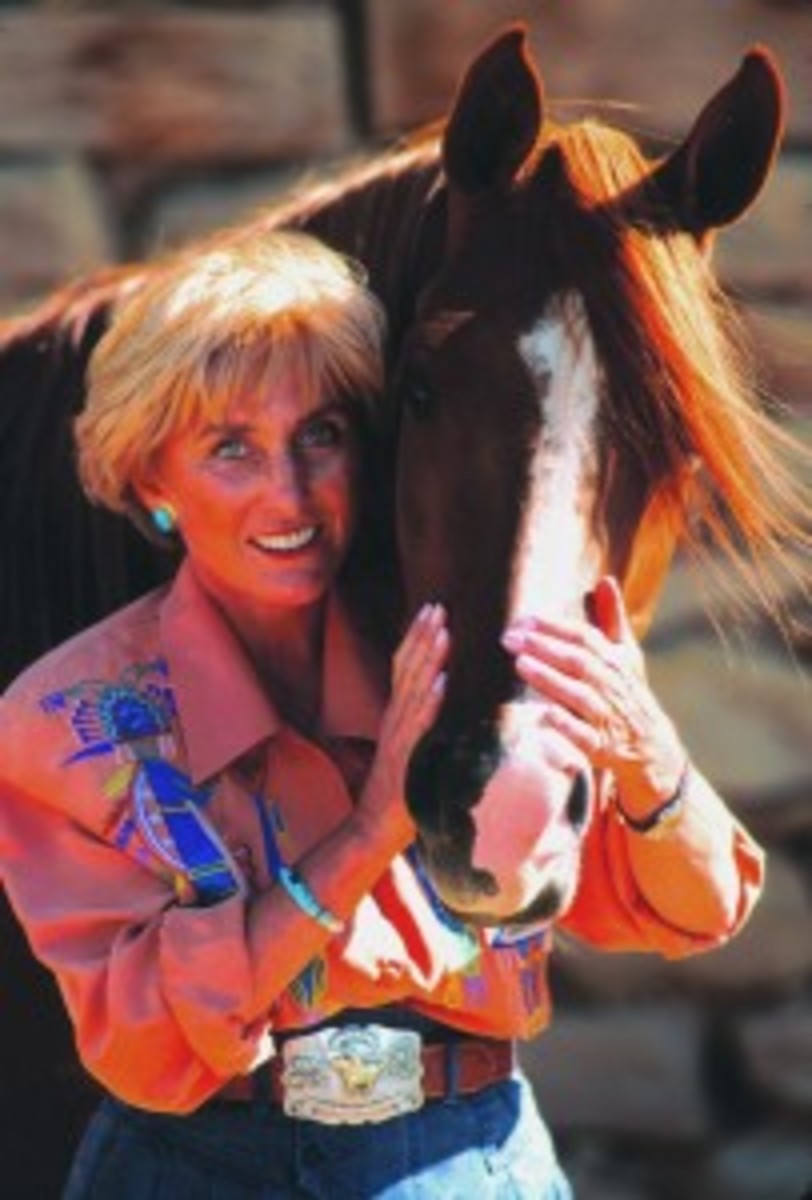Here, Linda Tellington-Jones addresses seven common equine-behavior myths about equine behavior. (Information excerpted from The Ultimate Horse Behavior and Training Book, Trafalgar Square Publishing, available from www.EquineNetworkStore.com.)

Myth #1: Once you get into a fight with your horse, such as trying to get him to cross a stream or a bridge, you can’t give in or your horse will think he’s ?won.?
Tellington-Jones:?Horses aren?t keeping score or holding grudges. If you’re too tired, impatient, angry, or concerned about your safety to work with your horse, walk away.?
Myth #2: Never get off your horse or you?ve ?lost.?
Tellington-Jones:?Often times, all it takes to get a horse over his fear is for the rider to dismount and show him how to walk across the water (or bridge).?
Myth #3: Horses learn only through repetition.
Tellington-Jones: ?If a horse can learn a bad habit in one session, why can he not learn a good one? While some repetition is useful to lay down the neural pathways (in the brain) for learning, I don’t believe that hundreds of repetitions are necessary. Actually, I believe mindless repetition creates boredom and resistance and can stress a horse.?
Myth #4: Horses will take advantage of you if you let them.
Tellington-Jones: ?Horses are simply responding to your requests, cues, and visual pictures. Your horse’s response perfectly mirrors what you put out there for him. We get back exactly what we ask for.?
Myth #5: Never give your horse treats, because this will spoil him and can make him nip.
Tellington-Jones: ?Using small crunchies or treats during training can encourage your horse to breathe, promote relaxation, and encourage him to lower his head. Besides, it’s a nice reward.?
Myth #6:Personality defects are usually permanent character flaws in horses.
Tellington-Jones: ?In my experience, attitude problems in horses are often misunderstood and misinterpreted, and the horse is labeled with the negative assessment forever. Upon closer examination, most behavioral issues can be traced to one or more factors, including pain, fear, conformation, breed, and management.?
Myth #7: If your horse is aggressive, kicks, or bites, you need to really ?get after him.?
Tellington-Jones: ?Horses who kick or bite are doing so because we haven’t heeded their ?whispers.? They?ve raised the volume to get our attention. Learn to tune in to the whispers and your horse will never need to ?shout.??
Linda Tellington-Jones? vast equestrian background covers seven decades. As a child, she rode her horse to school in rural Canada. By the age of 11, she was competing in nine-day horse shows in Calgary and Edmonton, Alberta. By age 13, she was teaching riding lessons at Briercrest Stables in Edmonton.

This dedicated horsewoman would go on to compete extensively in combined training, hunter/jumper, and dressage events. She also completed six of seven Western States Trails Foundation 100-Miles-in-One-Day Trail Ride (known as the Tevis Cup). In the 1950s and 1960s, Tellington-Jones was a United States Pony Club instructor and an American Horse Show Association judge, as well as a judge and competitor in the North American Trail Ride conference events.
A founding member of the California Dressage Society, she also owned and operated the Pacific Coast School of Horsemanship and Research Farm with then-husband Wentworth Tellington, a former Cavalry officer. She’s been an official member of the veterinary team for the U.S. Endurance Team in several world-championship competitions.
Today, Tellington-Jones may be best known for creating the Tellington Method. She describes this method as ?a holistic system of training horses that deepens mutual trust, overrides common resistances, and strengthens the horse-human bond.? Tellington-Jones continues to teach, write, and work with horses around the world, including a number of Olympic horses and riders.
When not on the road presenting clinics and demonstrations, she and her husband, Roland Kleger, reside on the Big Island of Hawaii.






